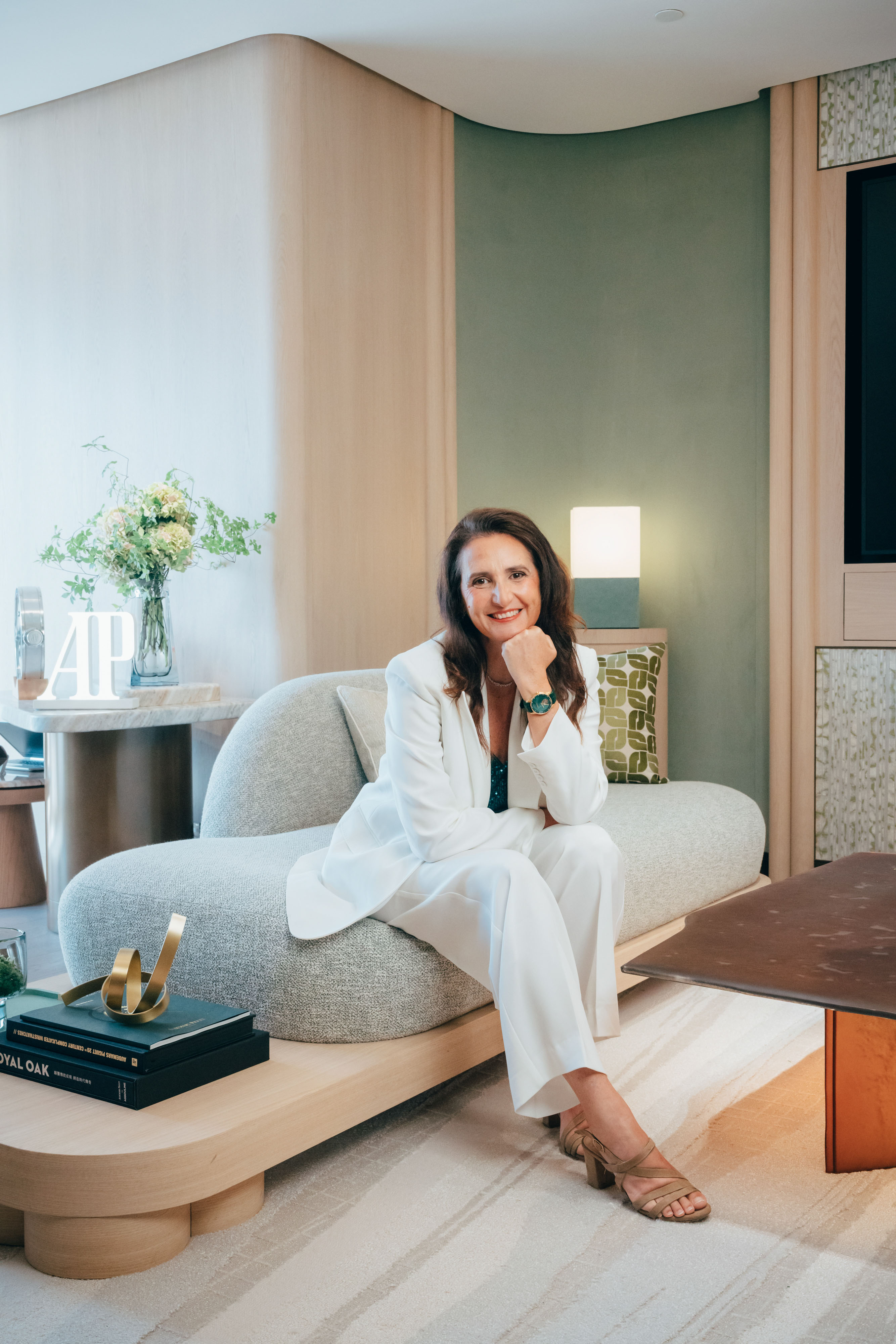
Imran Amed speaks to Nadja Swarovski to learn the secrets of her transformative collaboration strategy.
Imran Amed speaks to Nadja Swarovski to learn the secrets of her transformative collaboration strategy.
LONDON – Nadja Swarovski, Vice President of International Communication of Swarovski, grew up in the Tyrolean Alps in the small town of Wattens, place where her great-great-grandfather, Daniel Swarovski, set up a business in 1895 that would become the world’s undisputed crystal empire.
Exactly one hundred years later, in 1995, Nadja joined her family business in New York. After a liberal arts education in Texas, far away from her native Austria, she moved on to gain experience with legendary New York Fashion PR Eleanor Lambert and subsequently took a crash-course in the world of contemporary art courtesy of Larry Gagosian.
With this experience she developed and executed a collaboration strategy that would transform Swarovski into a powerful and respected force in the worlds of fashion, art, architecture and design – and would create a powerful new revenue stream for the Swarovski business. For almost 15 years, Swarovski has collaborated with leading artists, designers and craftspeople to showcase their product, thereby also instituting a crucible for innovation which enables the Swarovski product to evolve with the desires of its creative collaborators.
What makes this transformation so remarkable is understanding exactly where Swarovski was when Nadja arrived on the scene. While today the name Swarovski conjures up vivid images of unabashed glamour, cutting edge fashion, contemporary art and design innovation, it wasn’t always that way.
Those with longer memories may recall a time when crystal animal figurines were the de facto Swarovski icons, particularly outside Europe. Much of the company’s consumer-facing business was focused on these kitschy baubles and curios, and hence they became a defining feature in the company’s visual identity as well as a significant source of revenue.
Then, Nadja discovered Swarovski’s lost heritage as a supplier and partner to the exciting worlds of film, fashion and fine art. Ironically, it was Swarovski that provided Carol Channing’s glittery accessories when she sang ‘Diamonds are a Girl’s Best Friend’; and those were the 10,000 Swarovski crystals on adorning Marilyn Monroe’s dress in the film Gentlemen Prefer Blondes. Nadja also learned that Swarovski had collaborated closely with Charles Frederick Worth, widely regarded as the world’s first couturier, and also with Christian Dior and Coco Chanel.
The impact of Nadja Swarovski’s collaboration strategy on her family business cannot be understated. In recent years company’s revenues doubled to more than 2 billion euros, and since her arrival, the overall share of profits of the fashion business has soared from 30 to 70 percent, largely through success of the lighting and furniture from Swarovski Crystal Palace and jewellery from Atelier Swarovski
I sat down with Nadja at Swarovski’s sparkling new offices in London to learn how she has done it and to get her tips on establishing collaborations that work.
IA: Tell us about the Communications Unit that you head in London and what role does it play in the development of the Swarovski business?
The Communications Unit is focused on increasing the awareness of young designers and the work we do from this office. Currently, our work is divided into five departments, each with its own focus on different types of collaborations:
Fashion from which we collaborate with designers and sponsor events such as the British Fashion Awards.
Atelier Swarovski from which we produce exclusive pieces of jewellery designed by top designers such as Viktor and Rolf and Giles Deacon.
Atelier Swarovski large striped necklace by Viktor & Rolf

Jewellery/Runway Rocks from which we showcase jewellery on the catwalk around the world, collaborating with jewellery designers to create one-off couture pieces of fashion jewellery, with such designers as Christopher Kane, Stephen Webster and Erickson Beamon
Swarovski Crystal Palace from which we produce both lighting and furniture created using Swarovski crystal as the main element, designed by some of the world’s top architectural innovators, including Zaha Hadid and Marcus Tremonto.
Stage and Screen from which we collaborate with designers of both stage production and films and also support events such as the Costume Designers Guild Awards and The Oscars.
IA: The Swarovski brand has become synonymous with the best in design. One key reason for this is your numerous collaborations with artists, designers and craftspeople. Why did you decide to use this kind of strategy?
Sponsoring both already established and new designers seemed like the obvious way in which to better the perception of Swarovski as a brand. Not only does this instantly associate the crystal with the up-and-coming styles and fashions, it also allows the crystal to be used to its full potential by people with a distinctively creative mind. It also means that up-and-coming designers who may not have been able to afford the crystal ordinarily are rewarded for their talent by having the opportunity to work with a top quality product that embellishes and complements their designs.
IA: But this is nothing new, right? Back in 1954, Swarovski collaborated with Christian Dior to create the Aurora Borealis crystal.
Collaboration has definitely always been something Swarovski has strived to be a part of. It is a natural and vital part of our work from my office, it encourages and challenges designers, giving them the material to experiment and create, resulting in some of the most innovative designs Swarovski has ever been a part of.
Our history of collaboration was the main reason for the departments I have created today; Swarovski’s heritage has always been in fashion and I felt it was important to explore that and update it, bringing crystal into the present time by making it accessible to up-and-coming designers as well as the more established designers we work with.
IA: Can you give me an example of one such collaboration?
A perfect example of this is Giles Deacon, a designer we have sponsored since the beginning of his career and who we have been delighted to watch grow into such an innovative and influential designer today.
In doing this, Giles has also lived up to his part of the deal, because our sponsorship works as a two way street and we expect the designers to endeavour to use the our product as they have never been used before, to really raise the level of design.
The designers with whom we have collaborated in the past have all brought something innovative and new to the brand, so it is important that the sketches and ideas new designers put forward fit with the use of crystal, and include new ideas and ways in which it could be applied.
IA: Which of these would you consider to be particularly successful in terms of achieving your business objectives?
The work from each department currently existing from my office is proof that our strategies are working.
Specific collaborations are those of Atelier Swarovski and Swarovski Crystal Palace, both of which are the result of such exciting collaborations that we decided to create business units out of them and are now selling and producing the results of our crystal/designers collaborations.
There are always things that we can learn from and elements that we can improve, but I have no regrets. The work we do is constantly challenging, which is one of the things I like most about my job.
IA: Any last words of advice for the Luxury Society community?
I encourage other luxury brands not to be afraid to experiment, to go with their gut instincts and to invest in people whom they believe in.
Imran Amed, Editor-in-Chief










